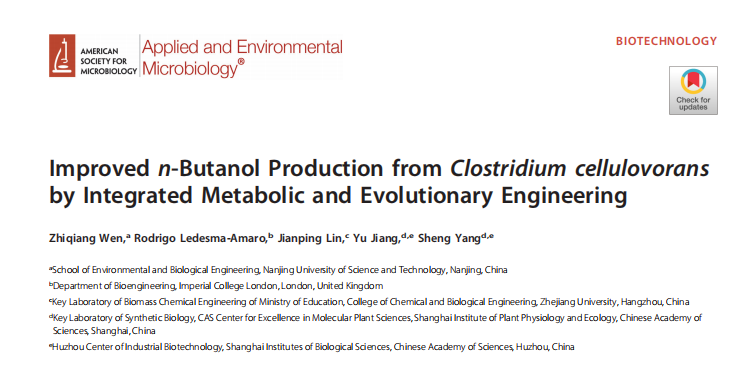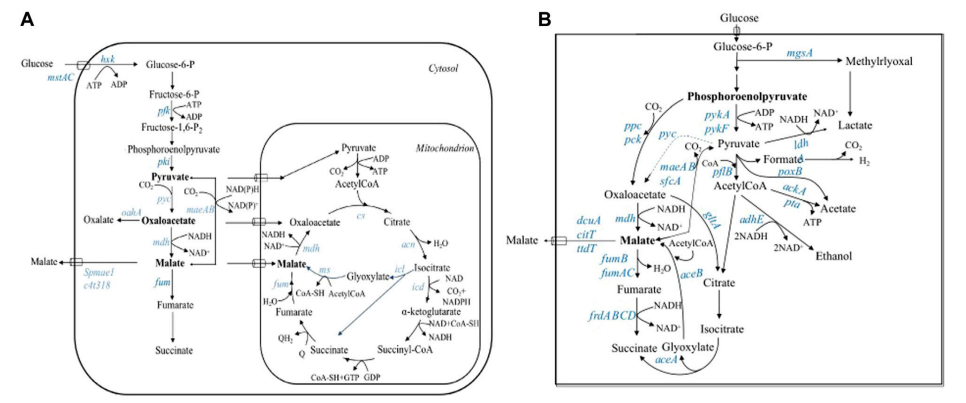L-theanine is a source of fresh and unique flavor in tea, and its content affects the quality and price of tea. theanine has various positive effects on human health, such as antioxidant, anxiety relief, anti-tumor, memory improvement, blood vessel improvement, and immune enhancement. Therefore, L-theanine, as a multifunctional food additive, has attracted much attention due to its wide range of applications and growing market demand.
However, the industrial production of theanine is not ideal. The natural enzyme for synthesizing theanine in tea trees is theanine synthase, but its structure is unstable and it is prone to catalyzing reverse reactions, which can lead to the decomposition of theanine. At present, researchers have identified and isolated various enzymes that can participate in theanine synthesis from microorganisms, among which γ- Glutamyl methylamine synthesis (GMAS) has received considerable attention due to its good affinity and tolerance to substrate ethylamine, and has been overexpressed in various industrial bacterial strains such as Corynebacterium glutamicum. However, there is little research on the effect of the efficiency of GMAS on the fermentation yield of L-theanine. Therefore, it is necessary to improve the catalytic efficiency of key enzymes to enhance the ability of glutamic acid producing rod-shaped bacteria to produce theanine. There is an urgent need to develop green and sustainable methods to efficiently synthesize L-theanine.

Related Services
Protein Engineering and Optimization
Biosynthesis Sequence Design and Optimization
Synthetic DNA Library Construction
Through a strategy combining protein engineering and metabolic engineering, a recombinant glutamic acid rod bacterium that can efficiently and safely produce L-theanine has been constructed. The research results are published in the journal Biosource Technology under the title of Combining product and metabolic engineering strategies for high-level production of L-theanine in Corynebacterium glutamate.
The author first screened and modified high activity and stability GMAS through gene mining and rational design methods. Then, the author knocked out the ggt gene that degrades L-theanine, the anaT gene involved in L-alanine synthesis, and the NCgl1221 gene encoding glutamate output protein to increase the carbon flux of L-theanine synthesis. Finally, by increasing the supply of intracellular ATP, the production of L-theanine was further improved. The L-theanine production of the recombinant glutamic acid rod-shaped bacteria obtained through final transformation reached 44.12 g/L, which is currently the highest reported production of theanine in glutamic acid rod-shaped bacteria.
Exploration and Enzyme Modification of GMAS
The author screened four different sources of GMAS: M Universalis, M Extraquess, M Mays and P Aminovorans were identified for expression and functional validation (Figure 1), and it was found that the relatively mild catalytic conditions and high specific enzyme activity of PaGMAS deserve further investigation.

Figure 1 | Enzymatic properties and catalytic ability of MuGMAS, MeGMAS, MmGMAS, and PaGMAS
The author found that there were substrate residues present at the end of the conversion reaction, indicating that the decrease in enzyme activity led to the suspension of the reaction. Therefore, increasing GMAS enzyme activity is crucial for the synthesis of L-theanine. The author first identified the conserved amino acid residues of PaGMAS, and then further molecular docking revealed that mutants such as E179, D177, and E122 interact with the hydroxyl or amino groups of the ligand. In order to improve the thermal stability of GMAS and make it more suitable for future industrialization, MD simulation and FoldX screening were used to identify the binding energy changes of virtual saturation mutations. Finally, among the 10 mutants, the activity of E179K, R314K, and N105R increased by 35%, 7%, and 18%, respectively (Figure 2).

Figure 2 | Structural prediction, identification, and mutant screening of active centers
The author further investigated the molecular mechanism underlying the enhanced activity of mutant E179K. MD simulations revealed that the weakened binding affinity between the mutant and Mg2+made Mg2+more active, thereby increasing enzyme activity. Furthermore, FoldX analysis revealed a decrease in the binding affinity between the mutant and ATP, indicating a tighter binding between the enzyme and ATP, thereby enhancing its activity (Figure 3). The mutant N105R achieves rigidity in the local flexible region, thereby making the protein structure more stable. The author constructed a mutant named T1 (E179K/N105R) to verify whether it promotes the production of theanine. After research, it was found that the L-theanine production performance of T1 was significantly better than that of WT, mainly due to its more stable protein structure, higher substrate affinity, and better catalytic efficiency.

Figure 3 | Structure and enzymatic properties of WT and T1
| Catalog Number | Product Name | Product Size | Applications | Price |
|---|---|---|---|---|
| GE0026S | CD® High-Fidelity DNA Polymerase | 100 Units | Determination of genomic cleavage. | Online Inquiry |
| GE0026L | CD® High-Fidelity DNA Polymerase | 500 Units | Determination of genomic cleavage. | Online Inquiry |
| GE0027 | Site-directed Mutagenesis Kit | 10 Reactions | More efficient at targeting the Cas9 protein to the nucleus. | Online Inquiry |
Improving carbon flux in L-theanine biosynthesis
The author constructed wild-type PaGMAS and its mutant PaGMASE179K/N105R onto plasmid pDXW10 and introduced them into the glutamic acid producing strain C In glutamum g01, strains Tea1 and Tea2 were formed. After cultivation and expression in shake flasks, it was found that the L-theanine titer of Tea2 increased by 36.61% compared to Tea1 (Figure 4A).

Figure 4 | Increasing L-theanine production
The author found through homologous comparison that there is a ggt gene in Corynebacterium glutamicum that can hydrolyze theanine. Therefore, it was knocked out to form strain tea3, which increased theanine production by 13.71%, reaching 17.42 g/L (Figure 4B). At the same time, it was found that by-products were produced during the fermentation process of Tea3. Therefore, the ALAT involved in alanine synthesis in Corynebacterium glutamicum was knocked out to obtain strain Tea4, which increased the production of L-theanine to 18.42 g/L (Figure 4B). Glutamate is not only an important precursor for the synthesis of theanine, but also a major fermentation byproduct. The author knocked out the gene NCgl1221, which encodes a channel protein that controls the entry and exit of glutamate into cells, to increase the intracellular L-glutamic acid content. The strain Tea5 showed a fermentation result, which showed a 43.63% decrease in extracellular glutamic acid content (Figure 4D), and the production of L-theanine reached 19.32g/L.
Increasing ATP supply to promote theanine synthesis
ATP is essential for increasing biomass and theanine production. Recent studies have shown that an ATP synthesis system based on ppk can effectively increase fermentation yield. Therefore, the ppk gene was also constructed on the pDXW10 plasmid to form strain Tea6. Adding an appropriate concentration of sodium hexametaphosphate increased ATP levels by 35.32% compared to Tea5 (Figure 5), and L-theanine production by 8.07% (Figure 4).

Figure 5 | Introduction of ATP regeneration system
Batch fermentation with supplementary materials
Batch culture with supplementary materials can maintain the substrate concentration in the reactor below the toxicity level, thereby overcoming the impact of substrate inhibition during the fermentation process. The author cultured the recombinant strain at an appropriate pH, temperature, stirring speed, and dissolved oxygen to an OD600 of approximately 40, and added ethylamine solution at a constant rate to produce L-theanine. Finally, the maximum biomass (OD600) of Tea6 reached 62.21, and the fermentation yield of L-theanine reached 44.12 g/L (Figure 6).

Figure 6 | Fermentation production of L-theanine in a 5L bioreactor
In summary, the author adopted a combination of protein engineering and metabolic engineering methods, and through rational design, modified key enzymes, regulated metabolic pathways to increase carbon flux, overexpressed key genes to improve ATP supply, and constructed a recombinant Bacillus subtilis that can efficiently produce L-theanine. In a 5L bioreactor, the final production of L-theanine can reach 44.12 g/L, which is currently the highest level of L-theanine production reported by Bacillus subtilis. This provides an efficient and economical biosynthesis method for the synthesis of L-theanine and contributes to the industrial production of L-theanine.









